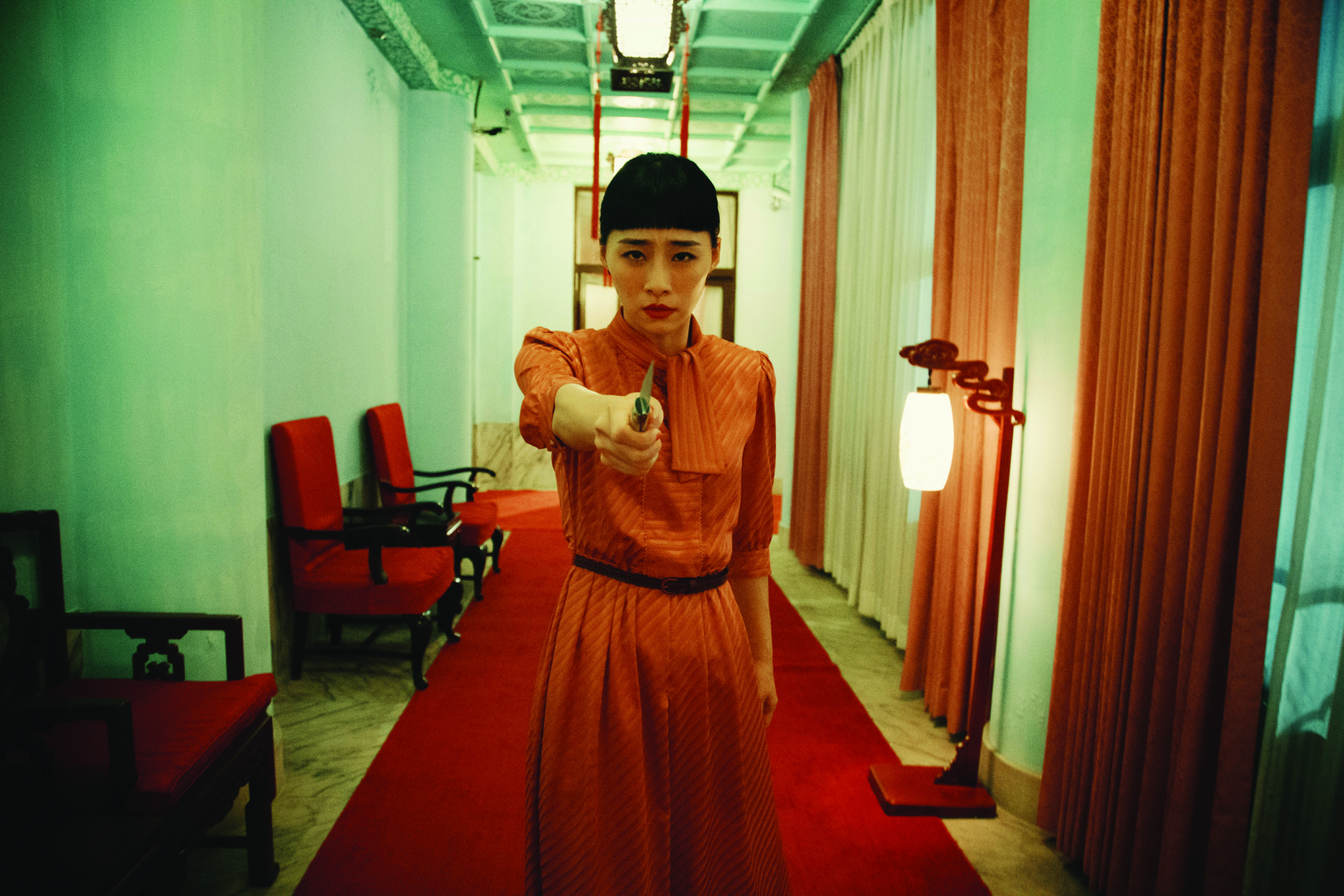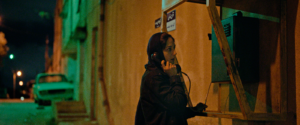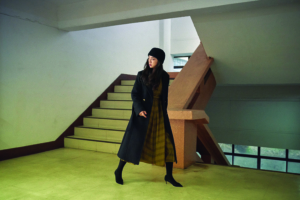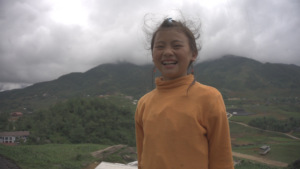‘They don’t just want to take my body. They want to take my soul!’
An actress (played by Wu Ke-Xi) finally lands her breakout role after a series of false starts and insubstantial ‘extra’ parts. But there’s a catch. She must submit to full-frontal nudity and an explicit sex scene. The male director (Shih Ming-Shuai) isn’t averse to physical abuse on set. The actress is humiliated for missing cues, endlessly objectified in both diegetic and extradiegetic spaces. At one point, she is slapped across the face. Her anxiety starts to manifest delusions and paranoid hallucinations; is she being followed? The young woman she believes to be trailing her may well be an incarnation of impostor syndrome; is the ‘right’ actress for the role waiting to take her place?
The state of mind of the actress – the titular character of Nina Wu (Midi Z, 2019) – is replicated by the film form, with temporal jumps forward and flashbacks intercut with possible subjective fantasies. These disrupt any sense of narrative cohesion. As Nina’s grip on reality falters, she discovers that repressed memories can no longer be contained, leading to a final reveal that many audience members will likely find uncomfortable.
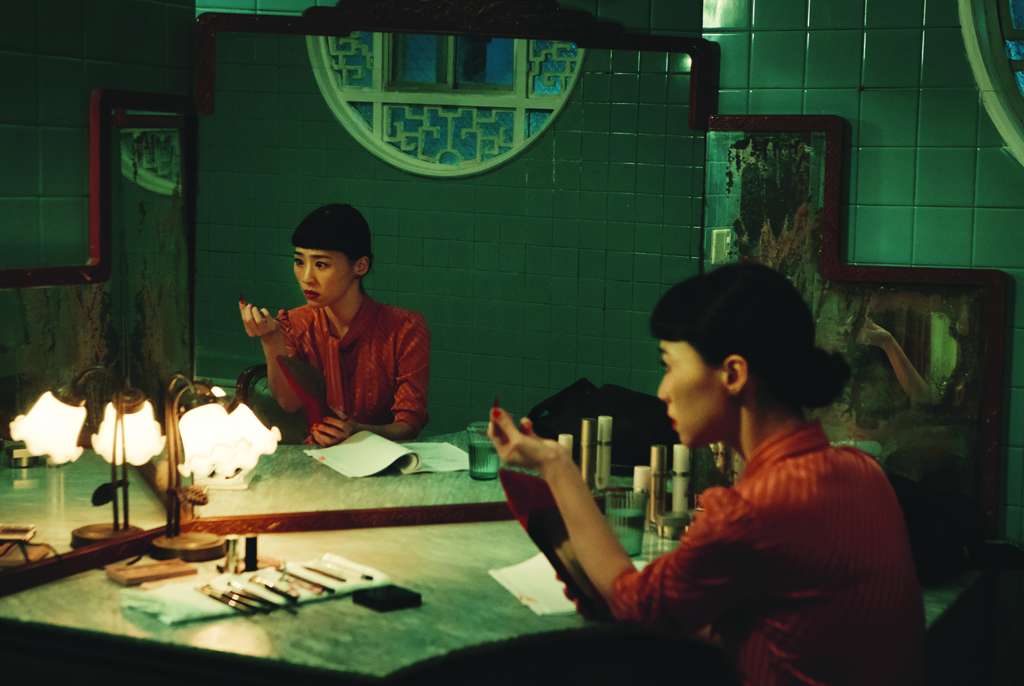
But, then again, a film that is responding to the #MeToo movement shouldn’t make for a comfortable experience. Nina Wu is a lurid and stylised film; its disorienting logic isn’t afraid to confound or even frustrate its viewers. The screenplay was originally written by Wu, a regular collaborator of Midi Z’s, in early 2016, but she revisited it in 2017 after hearing about the Harvey Weinstein scandal[1]For some background on the scandal, see ‘Harvey Weinstein Timeline: How the Scandal Unfolded’, BBC News, 24 May 2019, <https://www.bbc.com/news/entertainment-arts-41594672>, accessed 1 November 2019. and reading the firsthand accounts of the actresses he had abused.[2]Silvia Wong, ‘Director Midi Z, Actor-writer Wu Kexi on Their Cannes Debut with the #MeToo-themed Nina Wu’, Screen Daily, 19 May 2019, <https://www.screendaily.com/features/director-midi-z-actor-writer-wu-kexi-on-their-cannes-debut-with-the-metoo-themed-nina-wu/5139614.article>, accessed 1 November 2019. ‘I rewrote the whole script and the structure and everything,’ she told Deadline Hollywood last year.[3]Wu Ke-Xi, quoted in Joe Utichi, ‘How the Harvey Weinstein Scandal Charged Ke-Xi Wu to Write Nina Wu About Industry Abuses – Cannes Studio’, Deadline Hollywood, 19 May 2019, <https://deadline.com/video/wu-ke-xi-midi-z-interview-nina-wu-cannes/>, accessed 1 November 2019. The resulting film – co-written by Midi Z – covers dark territory and couldn’t be more timely; while the screen industries of Asia have not explicitly been a part of this rather West-centric discourse, Midi Z locates his fifth feature within a broader Asian context with the claim that ‘the position of female filmmakers in Asia, Japan and Korea is still so troublesome’.[4]Midi Z, quoted in Patrick Frater, ‘Midi Z on Cannes Title Nina Wu: “I’m Aiming for a New Cinematic Language”’, Variety, 19 May 2019, <https://variety.com/2019/film/news/midi-z-nina-wu-screenwriter-star-wu-ke-xi-1203220095/>. For more on the manifestations of #MeToo in the Asian screen industries, see Suyin Haynes, ‘How #MeToo Is Taking On a Life of Its Own in Asia’, Time, 9 October 2018, <https://time.com/longform/me-too-asia-china-south-korea/>, both accessed 1 November 2019. In fact, he believes that he found it difficult to secure funding for Nina Wu because its story is told from a female perspective.[5]See Lindsay R Bellinger, ‘Premiere of Midi Z’s Film Nina Wu and Quentin Tarantino as Surprise Audience Member’, Filmfestivals.com, 21 May 2019, <https://www.filmfestivals.com/blog/lindsay_r_bellinger/premiere_of_midi_zs_film_nina_wu_and_quentin_tarantino_as_surprise_audience_member>, accessed 1 November 2019.
While Nina Wu marks a stylistic and generic departure for Midi Z, perhaps best known for having directed The Road to Mandalay (2016) and Poor Folk (2012), it bears thematic similarities to its predecessors. These previous films explore the struggles of illegal Burmese immigrants who, in their newfound circumstances, must negotiate a lack of opportunity and agency. Questions of agency and opportunity are also central to Nina’s experiences as she finds herself the victim of an oppressive hierarchy that leaves her without a voice or the ability to take constructive action.
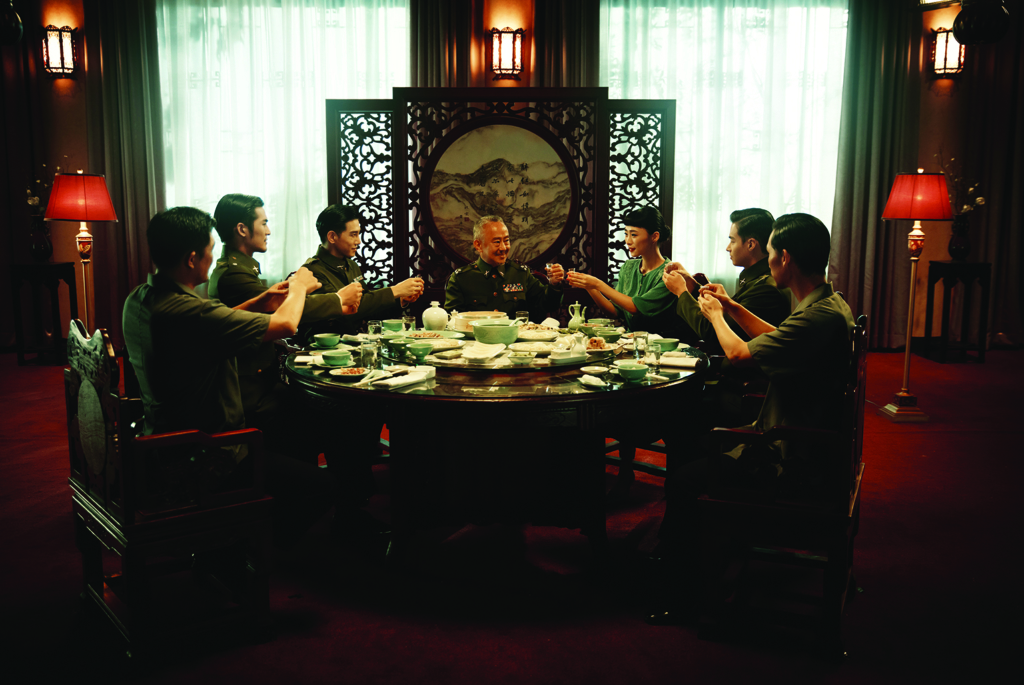
The film certainly doesn’t pull any punches in its portrayal of a disempowering environment that leaves Nina dazed and debilitated. She is repeatedly captured by cameras – on set, on location and by the paparazzi – as her star status rises. The heightened sound of the camera shutter as it bears down on her seems to signal a violent ‘claiming’ of her identity, reinforcing her lack of control. In depicting this endless objectification, Midi Z puts the insidious milieu in which Nina is embroiled into sharp relief while, at the same time, exploring the limitations of cinematic language to interrogate the post-#MeToo landscape.
Questions of agency and opportunity are central to Nina’s experiences as she finds herself the victim of an oppressive hierarchy that leaves her without a voice or the ability to take constructive action … In depicting this endless objectification, Midi Z puts the insidious milieu in which Nina is embroiled into sharp relief.
Interestingly, there exists a perception that the cinema of Taiwan is afflicted by an ‘identity crisis’, owing to its unresolved colonial history.[6]See Flannery Wilson, New Taiwanese Cinema in Focus: Moving Within and Beyond the Frame, Edinburgh University Press, Edinburgh, 2014, p. 1. Film scholars such as Flannery Wilson have noted a tendency in Taiwanese cinema to problematise the ostensible East/West dichotomy and to take on hybrid generic styles and film forms. For Wilson, adaptation is thus a defining trait of Taiwanese filmmaking, describing its mechanisms as resting on
the notion of intertextuality, citation, and translation rather than on homage or pure nostalgia. Adaptation, in Taiwanese cinema, leads to hybridisation in the sense that ‘the old’ is fashioned into ‘the new’. New genres are created through the combination of innovative cinematic language […] with recognisable visual, aural or diegetic elements.[7]ibid., p. 4.
Approaching Nina Wu with this lens, it’s emboldening to think of the film as one that resists classification, as a defiantly subversive response to the restrictions of genre, performance and film style. Here is a Taiwanese arthouse title that speaks to contemporary feminist discourse, drawing on the Weinstein scandal and the world of Hollywood (Nina reports having had a strange dream in which Nicole Kidman is washed away by a flood; there is a figurine of an Oscar statuette on her fridge).

But this is only part of the story. The film uses the production schedule of a fictitious big-budget thriller to take us into an artificial and brutally unsentimental world. This is a mercilessly clinical depiction of the filmmaking process, in keeping with the hostile power imbalances under scrutiny. While we see Nina’s journey from her initial interview to the press calls after the film she acted in has screened, the plot’s chronology is immediately nonlinear. Midi Z cuts from Nina’s screen test to a close-up of her crying; we assume she has missed out on her breakout role as the female lead in ‘Romance of the Spies’. Yet our assumption is proven false when the camera tracks back to reveal a working film set with lights, cameras and crew all in position. Nina is on set and in character, and the film’s slippery viewpoint has pulled the rug out from under us. This device plays into the red-herring trope of the thriller, creating a meta-identity incorporating the film we are watching and the film-within-a-film that Nina is starring in. At the same time, the disrupted logic and absence of coherence reinforce Nina’s lack of agency over her own narrative; her story is forever being manipulated and directed by the desires of men.
The disrupted logic and absence of coherence reinforce Nina’s lack of agency over her own narrative; her story is forever being manipulated and directed by the desires of men … she is reduced to a body, controlled by the whims of Shih’s director character.
These intertextual slippages transcend the film-within-a-film, shaping the representation of Nina within the broader narrative. It is as though she is always either ‘performing’ or protecting her identity from contamination by wearing a blank mask that belies the trauma sitting just below the surface. In many ways, she is reduced to a body, controlled by the whims of Shih’s director character. Yet, as we observe the director character’s humiliating treatment of his leading lady (his didactic on-set demands are all one-way traffic), an uncomfortable spectatorial space presents itself: the question of our own gaze, and of our relationship with Nina, is called into play. This problematically elusive characterisation of Nina means that she remains largely a mystery to us; the reductive archetype of the emotionally distant, unknowable female is invoked. Moreover, the register of Wu’s performance and the predominantly voyeuristic way in which Nina is framed and shot risk reinforcing those patriarchal power relations that Nina Wu sets out to expose. To what extent might this shooting approach be legitimately framed as commentary on the often-misogynistic visual language of the real-world films that ‘Romance of the Spies’ takes after, like the James Bond title The Man with the Golden Gun (Guy Hamilton, 1974) or Quentin Tarantino’s Pulp Fiction (1994)? Or is there an implied complicity between the audiences of these types of films and Nina Wu’s ‘world cinema’ arthouse audience?
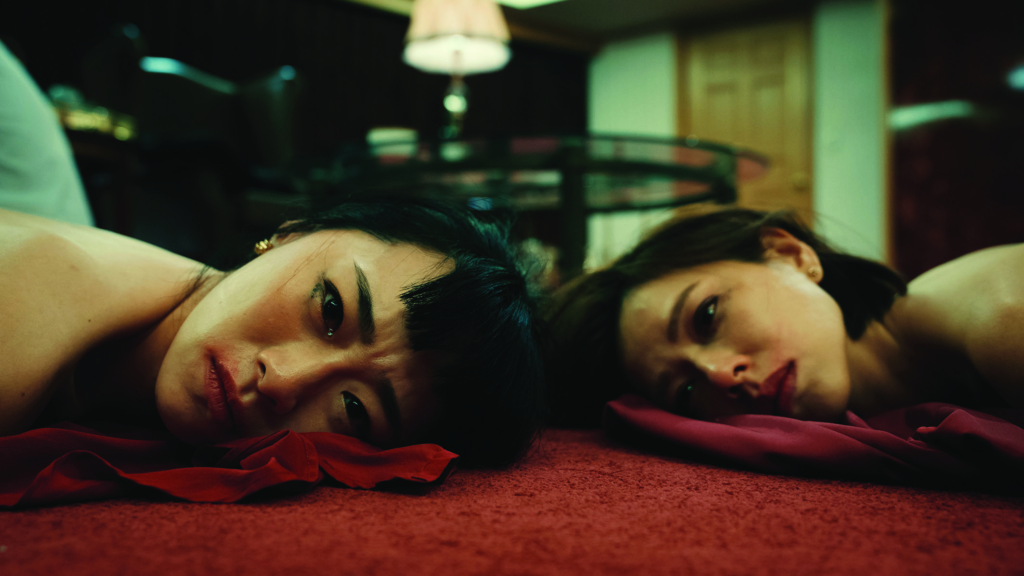
Beyond the film’s self-reflexive veneer, these extradiegetic layers provide material for additional intertextuality and critique, revealing genuinely troubling insights into the treatment of actresses and the perverse hierarchal relationships that constrain them. Nina Wu premiered last year in the Un Certain Regard stream of the Cannes Film Festival, a context in which some of Weinstein’s alleged abuses took place.[8]See Robbie Collin, ‘Asia Argento Calls Cannes Harvey Weinstein’s “Hunting Ground” and Targets Abusers “Yet to Be Unmasked”’, The Telegraph, 19 May 2018, <https://www.telegraph.co.uk/films/2018/05/19/asia-argento-calls-cannes-harvey-weinsteins-hunting-ground-targets/>, accessed 1 November 2019. In his film, Midi Z stages a scene of brutal abuse – a rape that is blankly captured in (diegetic) real time with a static camera – within a hotel room numbered ‘1408’; the number is an intertextual nod to a horror film co–executive-produced by Weinstein, 1408 (Mikael Håfström, 2007).
A troubling encounter from Wu’s past also coloured the script, adding another layer of self-reflexivity to the resulting film. In Nina Wu’s press kit, Wu recounts having been psychologically traumatised earlier in her career by a male director who mocked her for enquiring about the shot type he was using to frame her: ‘What do you know about shooting? Do you have the right to ask this question?’ she recalls him shouting at her. He then instructed a fellow actor to slap her face with banknotes as he taunted, ‘You smile like a slut because you feel so good!’ As a result of the incident, Wu suffered flashbacks, space-outs and hallucinatory thoughts, mirroring the fragile mental state that her protagonist is forced to navigate in Nina Wu:
I often found my mind drifting away; I would forget to turn the stove off while cooking; I burned the pot and found myself back on the set of the [shoot]; the director kept hitting my face with the banknotes and all the others coldly watched me, no one showing any support.[9]Wu Ke-Xi, ‘Screenwriter’s Statement’, in Luxbox Films, Nina Wu press kit, 2019, pp. 9–10.
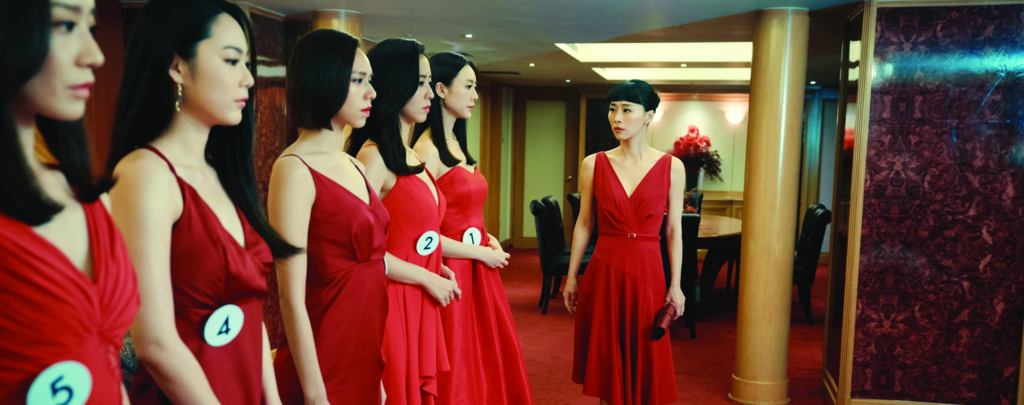
Wu’s experience chimes with those of so many young actresses who are looking for a career break; this is a pattern of abuse that clearly transcends Hollywood. Broadly speaking, the patriarchal power framework is more concentrated in the film industry; relative to other sectors, cinema offers women fewer opportunities, as it has always been male-dominated.[10]See, for example, Martha M Lauzen, ‘The Celluloid Ceiling: Behind-the-scenes Employment of Women on the Top 100, 250, and 500 Films of 2018’, Center for the Study of Women in Television and Film, San Diego State University, 2019, <https://womenintvfilm.sdsu.edu/wp-content/uploads/2019/01/2018_Celluloid_Ceiling_Report.pdf>, accessed 13 November 2019. Within this landscape, the voices of women are often sidelined as ancillary, the cinematic gaze is rendered in the service of a male viewer[11]As originally expounded on in Laura Mulvey, ‘Visual Pleasure and Narrative Cinema’, Screen, vol. 16, no. 3, Autumn 1975, pp. 6–18. and nuanced treatments of female subjectivity are frequently ignored. The funding difficulties that Midi Z encountered embody these realities: there is a reluctance to champion a female-centred project arguably because it doesn’t resonate with the men who are in charge of the purse strings.
Nina Wu speaks to the institutional disempowerment of women in the screen industries, paying close attention to the trauma that endures long after the abuse itself is committed. Troubling, fragmented and complex, the film resists any attempt at a resolution for Nina, instead leaving the audience to confront her painful experience at devastatingly close range.
Endnotes
| 1 | For some background on the scandal, see ‘Harvey Weinstein Timeline: How the Scandal Unfolded’, BBC News, 24 May 2019, <https://www.bbc.com/news/entertainment-arts-41594672>, accessed 1 November 2019. |
|---|---|
| 2 | Silvia Wong, ‘Director Midi Z, Actor-writer Wu Kexi on Their Cannes Debut with the #MeToo-themed Nina Wu’, Screen Daily, 19 May 2019, <https://www.screendaily.com/features/director-midi-z-actor-writer-wu-kexi-on-their-cannes-debut-with-the-metoo-themed-nina-wu/5139614.article>, accessed 1 November 2019. |
| 3 | Wu Ke-Xi, quoted in Joe Utichi, ‘How the Harvey Weinstein Scandal Charged Ke-Xi Wu to Write Nina Wu About Industry Abuses – Cannes Studio’, Deadline Hollywood, 19 May 2019, <https://deadline.com/video/wu-ke-xi-midi-z-interview-nina-wu-cannes/>, accessed 1 November 2019. |
| 4 | Midi Z, quoted in Patrick Frater, ‘Midi Z on Cannes Title Nina Wu: “I’m Aiming for a New Cinematic Language”’, Variety, 19 May 2019, <https://variety.com/2019/film/news/midi-z-nina-wu-screenwriter-star-wu-ke-xi-1203220095/>. For more on the manifestations of #MeToo in the Asian screen industries, see Suyin Haynes, ‘How #MeToo Is Taking On a Life of Its Own in Asia’, Time, 9 October 2018, <https://time.com/longform/me-too-asia-china-south-korea/>, both accessed 1 November 2019. |
| 5 | See Lindsay R Bellinger, ‘Premiere of Midi Z’s Film Nina Wu and Quentin Tarantino as Surprise Audience Member’, Filmfestivals.com, 21 May 2019, <https://www.filmfestivals.com/blog/lindsay_r_bellinger/premiere_of_midi_zs_film_nina_wu_and_quentin_tarantino_as_surprise_audience_member>, accessed 1 November 2019. |
| 6 | See Flannery Wilson, New Taiwanese Cinema in Focus: Moving Within and Beyond the Frame, Edinburgh University Press, Edinburgh, 2014, p. 1. |
| 7 | ibid., p. 4. |
| 8 | See Robbie Collin, ‘Asia Argento Calls Cannes Harvey Weinstein’s “Hunting Ground” and Targets Abusers “Yet to Be Unmasked”’, The Telegraph, 19 May 2018, <https://www.telegraph.co.uk/films/2018/05/19/asia-argento-calls-cannes-harvey-weinsteins-hunting-ground-targets/>, accessed 1 November 2019. |
| 9 | Wu Ke-Xi, ‘Screenwriter’s Statement’, in Luxbox Films, Nina Wu press kit, 2019, pp. 9–10. |
| 10 | See, for example, Martha M Lauzen, ‘The Celluloid Ceiling: Behind-the-scenes Employment of Women on the Top 100, 250, and 500 Films of 2018’, Center for the Study of Women in Television and Film, San Diego State University, 2019, <https://womenintvfilm.sdsu.edu/wp-content/uploads/2019/01/2018_Celluloid_Ceiling_Report.pdf>, accessed 13 November 2019. |
| 11 | As originally expounded on in Laura Mulvey, ‘Visual Pleasure and Narrative Cinema’, Screen, vol. 16, no. 3, Autumn 1975, pp. 6–18. |
